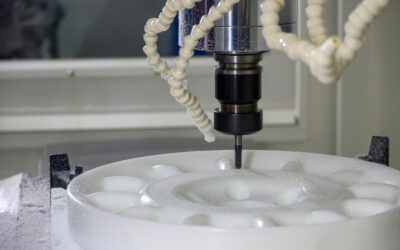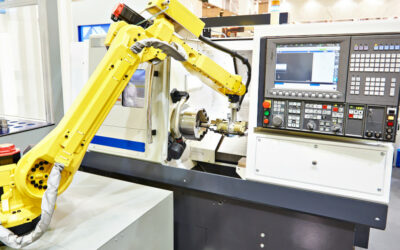The CNC lathe machine is a unique manufacturing technology allowing machine shops to create turned parts accurately and precisely. This machine combines the automated nature of computer numerical control (CNC) technology with various lathe tools to create high-precision parts (mostly of cylindrical shapes).
However, given the wide variety of available CNC lathe tools, choosing an ideal tool for your lathe project might be overwhelming. For instance, a lathe tool capable of boring a part might not be suitable for threading or facing operations. In addition, you’ve got several engineering materials to choose from when it comes to CNC lathe tools.
Here, we discuss various CNC lathe tools and their suitability for different CNC lathe projects. If you’re looking to choose the ideal CNC lathe tool and get your project done right, this article is for you.
Types of CNC Lathe Tools
Type 1: Turning Tool
Machinists use the turning tool to reduce the diameter of a cylindrical workpiece. It moves in a linear motion as the workpiece rotates around a fixed point, removing material from the outer diameter of the workpiece.

Figure 1: Turning tools
Turning tools come in two types — rough turning tools and finish turning tools.
Rough turning tools allow you to remove large portions of materials rapidly and efficiently. This is possible because of its small clearance angle and ability to withstand high cutting pressures.
In contrast, the finish turning tools feature larger clearance angles and remove smaller portions of a workpiece, making them ideal for finishing operations.
Type 2: Boring tool
The lathe boring tool (or boring bar) enlarges holes that have already been drilled (or cast). Unlike drills and reamers, lathe boring bars usually have a single point of contact with the workpiece, allowing you to enlarge holes accurately and precisely.
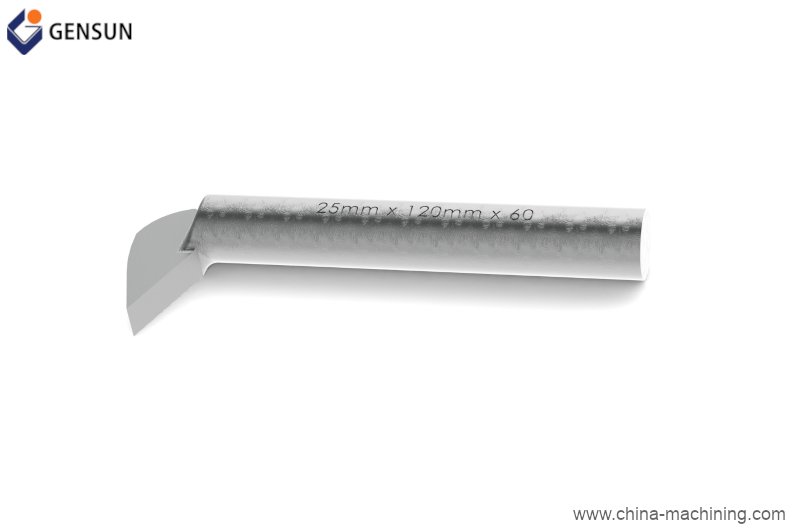
Figure 2: Boring tool
However, the boring bar is prone to chatter or vibrationㅡwhich results in waves on the machined surface and causes poor surface finish during boring operations. You can avoid this by using the large diameter boring bars or increasing the cutting pressure on the tool.
Decreasing the lathe cutting speed and increasing the feed rate can help you achieve higher cutting pressure and minimize chatter or vibration. (Related Post: Feed Rate vs. Cutting Speed: Understand the Difference)
Type 3: Facing tool
The facing tool features side cutting edges and is ideal for cutting a flat surface that is perpendicular to the workpiece rotational axis. It is mounted on a lathe tool holder and fed perpendicularly across the rotational axis of your workpiece to create the desired part.
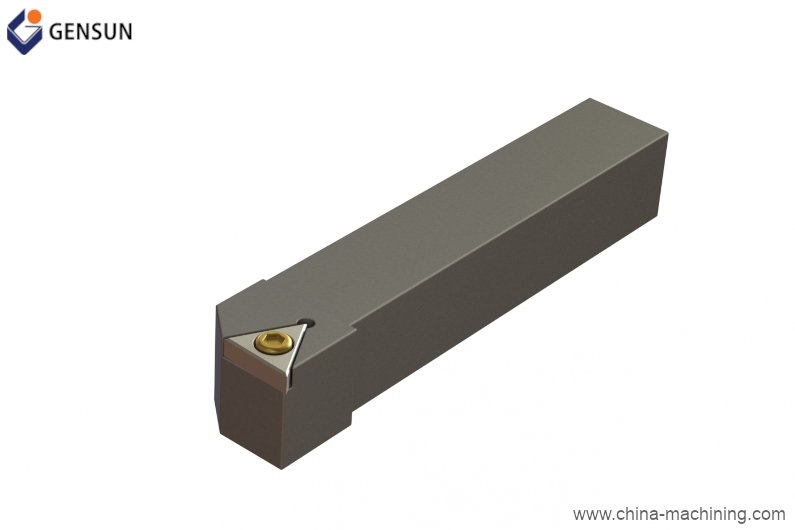
Figure 3: Facing tool
Type 4: Chamfering Tool
The chamfering tool is used to bevel the end of a workpiece (or part). This tool has an angled cutting surface, which helps to eliminate sharp edges in parts. It is the ideal tool if you’re looking to make your parts stronger and more aesthetically appealing.
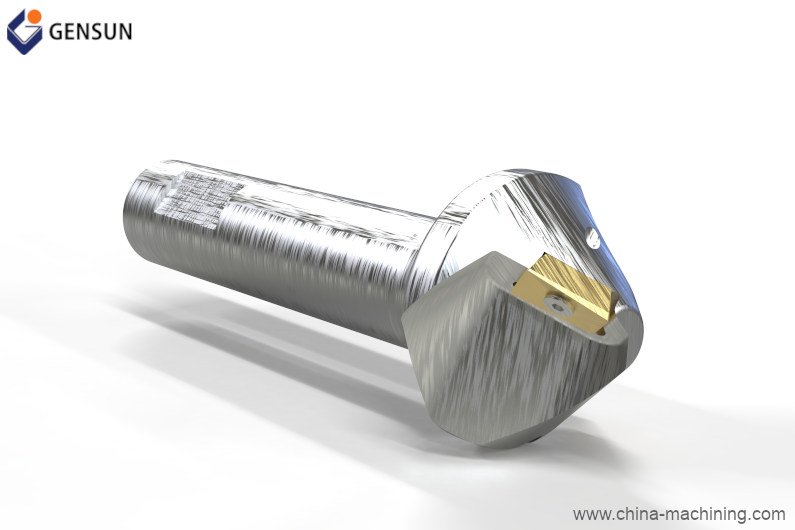
Figure 4: Chamfering tool
Type 5: Knurling Tool
Knurling tools are used for producing knurled partsㅡwhich means they produce a pattern of straight, angled, or crossed lines on your cylindrical workpiece. The tool features a holder and toothed steel wheels (or knurls) that press the desired pattern into surfaces.
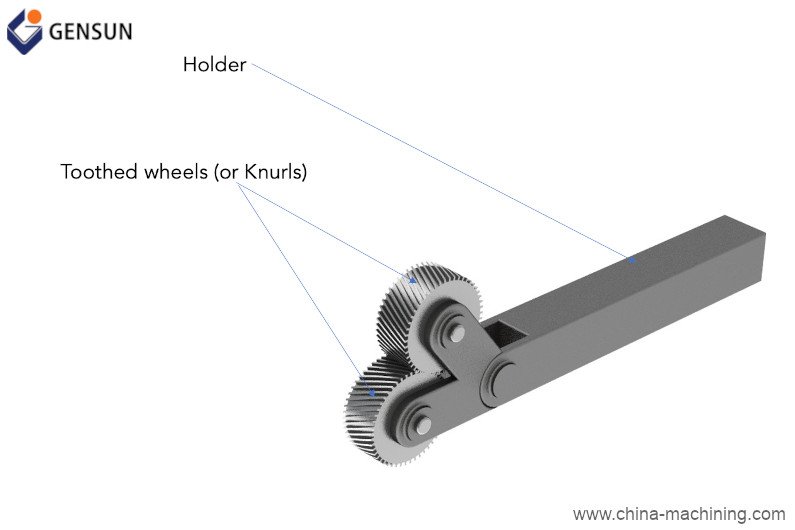
Figure 5: Knurling tool
Knurling tools are ideal if you’re looking to enhance the aesthetics of your part by introducing attractive ridges or patterns. You also want to use knurling tools to create features (or parts) that require gripping, like hand tools, round nuts, and screw heads.
Type 6: Parting Tool
Parting tools used in CNC lathes feature a blade-like cutting edge that plunges directly into a workpiece, cutting off materials at a specific length. You should use parting tools to cut (or remove) the finished end of your part from the stock clamped to the CNC lathe chuck.
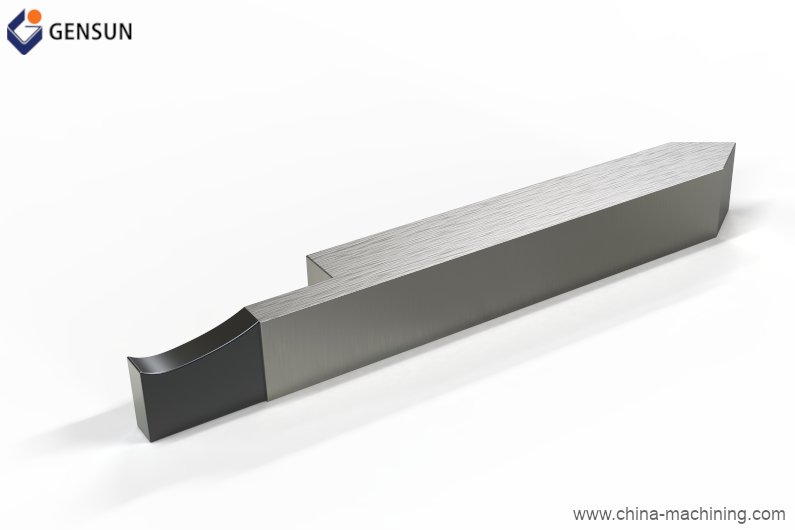
Figure 6: Parting tool
While these six lathe cutting tools can perform a wide variety of cutting operations, their success for a particular operation also depends on the material they are made of.
Classification of Lathe Cutting Tools According to Their Material
High-Speed Steel Tools
Tools made of high-speed steel usually have a unique combination of hardness, wear-resistance, toughness, and high-thermal strength. As its name implies, a high-speed steel tool can perform cutting operations at extremely high speeds, making it ideal for rough machining in low-volume manufacturing.
Carbide Tools
Carbide tools offer exceptional wear resistance and thermal strength comparable to the high-speed steel tool. However, carbide tools typically have longer tool life and allow faster cutting speeds than conventional high-speed steel tools. They are ideal for cutting a wide variety of materials, including heat-resistant steel, cast iron, stainless steel, graphite, glass, and plastics.
Diamond Tools
Diamond is one of the hardest natural materials on earth. As a result, you’d expect diamond tools to fare well in harsh machining conditions. For instance, diamond tools are ideal for machining refractory metals and hard-to-machine metals like silicon-aluminum alloys and graphite.
Your CNC Machining Project: Gensun Can Help
Now that you know something about the different types of lathe cutting tools, you’d agree that the success of your CNC lathe project depends on your choice of lathe cutting tools. Therefore you want to work with a machine shop with highly qualified engineers and machinists capable of understanding your design and choosing the ideal tools and machining parameters.
Gensun Precision Machining is a leading provider of CNC machining services across Asia. Not only do we have a team of highly qualified engineers and machinists, but we also use state-of-the-art equipment to get our customers’ products done right. Learn more about our CNC machining services.


